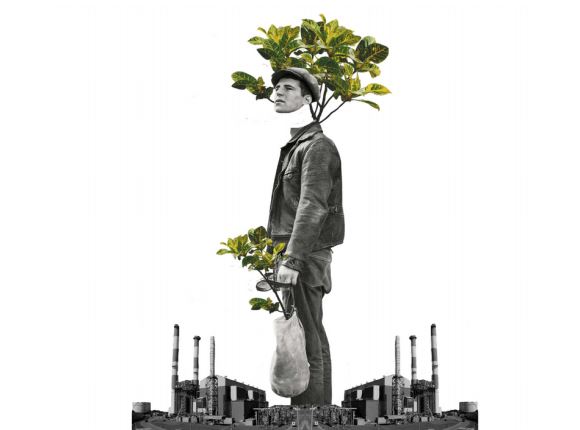Innovation & Sustainability: The Two Pillars of Lasting Change
Letting extinction develop into a trend is not the change this planet can’t afford. Future generations can continue to thrive only if we can preserve resources. As research intensifies, scientists around the globe from diverse streams such as chemistry and astronomy have been stressing on the fact that carbon dioxide levels in the atmosphere have surged by the burning of fossil fuel and other greenhouse gases have been warming the earth at an alarming rate. (Sumner, 2016)

“We have learned so much in the last 10 years, but the fact that the unprecedented climate change of the last 40 years is being driven by increased CO2 hasn’t changed”, says glaciologist, Lonnie Thompson. Life on earth is degrading at an unprecedented rate – access to clean water and air is going to get more and more difficult due to large scale industry production which leads to massive pollution of the environment. Climate change has led to ocean acidification, thereby giving rise to disrupted ecosystems.
People across the world have been taking small but certain steps to ensure sustainability of resources on the planet.
OLD PHONES TO THE RESCUE
Have you ever wondered what to do with your old phones that are gathering dust sitting discarded in your drawer? What if they could save rainforests and solve almost half of the ecosystem’s issues? Topher White, the CEO of a start-up called Rainforest Connection, has created a device that can detect a threat from illegal logging in forests and alert guards. White’s device uses old modified cell phones that are placed deep inside forests to pick up sounds of logging nearby. These sounds are then relayed through cloud to alert forest officials & guards and protect the forests from illegal and unethical activities.
NOT ALL CONFERENCES ARE ABOUT PRESENTATIONS & BILL GATES PROVES IT!
Bill Gates was recently found holding a jar of human faeces at a conference. While this might seem funny and even disgusting, his motive was to draw people’s attention to a major cause of disease. A large majority of people globally do not have access to proper sanitation facilities. To tackle this situation, Gates’ foundation has come up with a machine that can be installed for people without toilet facilities. This machine works by collecting human faeces, the microbes in which will eat all the waste in it and provide cleaning drinking water. The other benefit is that the microbes turn into methane, which in turn can be used as a source of energy. In developing countries, building sewer systems is not affordable by many. Therefore, the reinvention of toilet systems like these are very useful.
FLAVOURED EDIBLE CUTLERY?
Plastic is non-biodegradable and has, thus, become a major problem globally. In recent times, we have seen Delhi University come up with ‘Project Patradya’ to address the problem of the capital of India drowning in the large amount of waste produced daily. Under this project, Afghan women refugees manufacture environment-friendly cutlery made from millet and wheat flour. The cutlery is edible and comes in three flavours – sweet, savoury and plain. This edible cutlery is sold to cafés and ice-cream parlours to initially decrease and eventually eliminate the use of plastic alternatives.
GROW IS THE KEYWORD!
Ever heard of fabric made from water? TreeHugger, a top-rated sustainability blog, highlighted a story about a group of architects and chemists who came together to develop a sustainable fabric made from a material called Hydrogel that is 98% water. This is an example of biomimicry at its finest considering this fabric was designed to mimic spider’s web. Widespread usage of this and other such fabric could increase their sustainability.
Innovations are never-ending in this era. Buildings made from living material are much in vogue. According to Proud Green Building, a company in New York was recently awarded a $9.1 million federal contract to grow various living building materials. Self-mending construction material is the in thing – no more leaky roofs! “Ecovative” hopes that in future we might even be able to see buildings or furniture grown on site, thereby making life better for all organisms and developing a better environment for peaceful and sustainable co-existence.
About the authors:
Adrita Bhattacharya (BBA Sep’17)
Adrita is a part of SP Jain’s BBA September intake 2017. She aspires to become a successful businesswoman and expand her father’s business in the future. She is an art enthusiast who loves discovering different cuisines and music genres. Adrita is also very proud of her extensive music playlist, and rightfully so!
Rohit Jha (BBA Sep’17)
Rohit Jha is a part of the BBA September intake 2017. He is passionate about stocks, investments, eco-friendly businesses, and sustainable innovations. He believes in a future where environmentally benign products, innovations, and awareness will help reverse the damages to our environment. When he is not thinking about measures to save the world, Rohit likes reading books, listening to good music and watching classics
The article was originally written by Adrita Bhattacharya & Rohit Jha (BBA’17) in the first edition of Valour Dubai.




